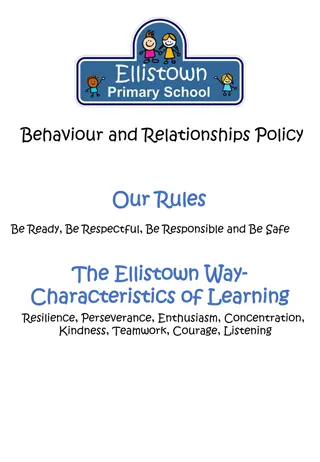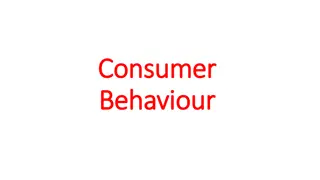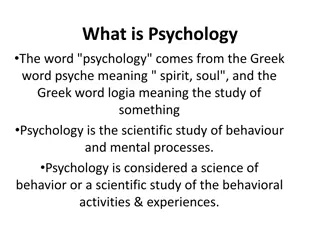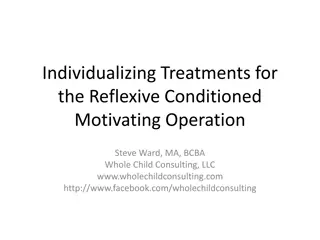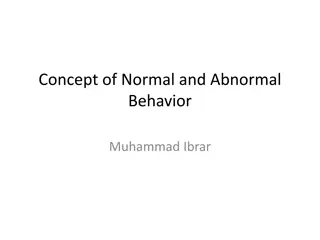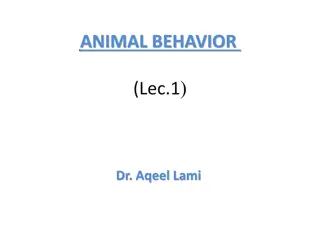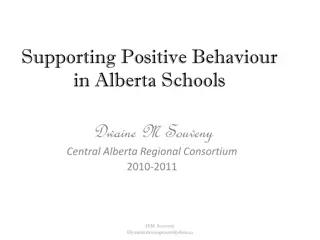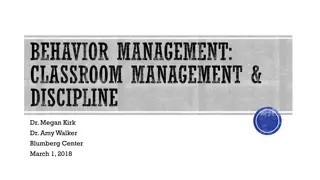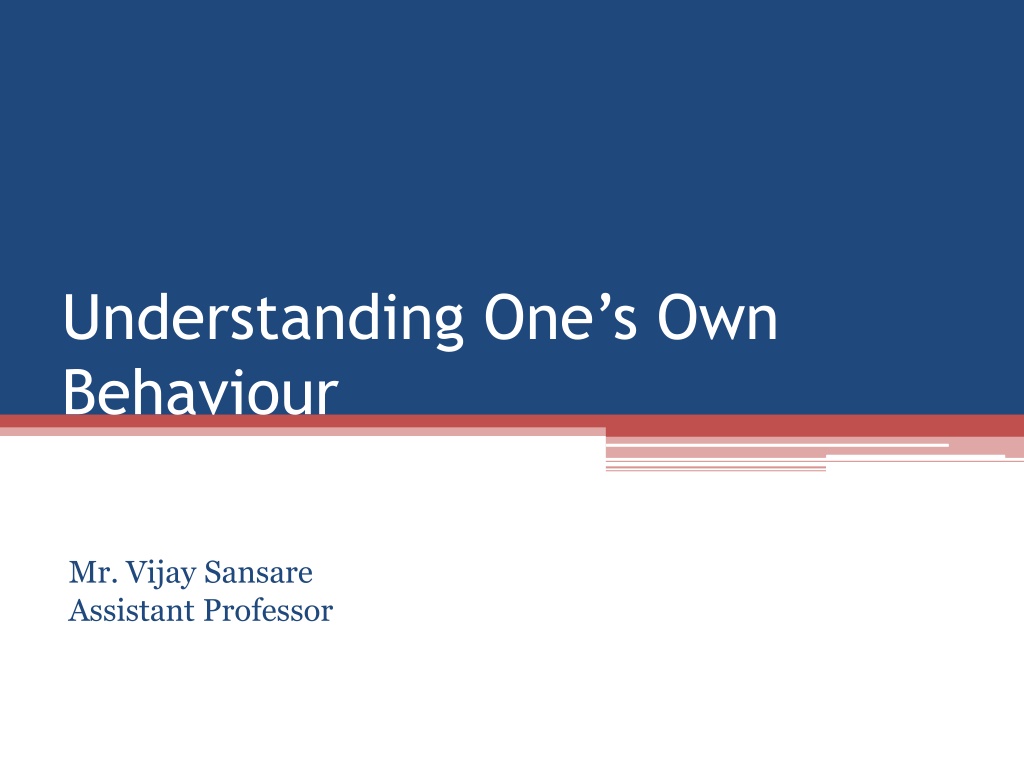
Understanding Behavioral Patterns: A Comprehensive Insight
Explore the concept of behavior, its observable aspects, measurement techniques, and the importance of understanding and defining behaviors for effective interventions. Discover the observable and non-observable behaviors through concrete examples and the significance of measuring behaviors to track progress.
Download Presentation

Please find below an Image/Link to download the presentation.
The content on the website is provided AS IS for your information and personal use only. It may not be sold, licensed, or shared on other websites without obtaining consent from the author. Download presentation by click this link. If you encounter any issues during the download, it is possible that the publisher has removed the file from their server.
E N D
Presentation Transcript
Understanding Ones Own Behaviour Mr. Vijay Sansare Assistant Professor
Behaviour behaviour is any observable overt movement of the organism generally taken to include verbal behaviour as well as physical movements (webref.org/ psychology/b/behavior.htm7)
Behaviour According to the above definition, behaviour is essentially observable physical activity: a pigeon pecks a disk, a woman says hello, a student raises his hand, and so forth. Comparable definitions may be found in The Oxford Dictionary of 2006), and in King (2008) and Levitis, Lidicker, and Freunda (2009). Psychology (Colman,
Behaviour Tinbergen (1951) defines behavior as the total of movements made by the intact animal (p. 2) Dretske (1988, p. 1ss) defines it as a process of an inner entity bringing movement or environmental outcome; and so on. about a bodily
Behaviour Behaviour is every action by a person that can be seen or heard. Behaviour must be defined in a way that is both observable and everyone working with the child has a good understanding of what the behaviour looks like and sounds like. measurable so that (Alberto & Troutman, 2003)
Behaviour Defining Behaviour When defining behaviour you need to ensure that it is: Observable Measurable Described in concrete terms Example: Sally hits her brother with a closed fist. Non-example: Sally is aggressive.
Behaviour Observable Natalie yells shut up at her parents when asked to clean her room Asha asks to go outside to ride her bike Robo bites his hand when he meets new people
Behaviour Non-Observable Natalie is rude Asha wants to play Robo hurts himself
Behaviour Measuring behaviour on a regular basis can provide a great deal of information. There are a variety of quick and easy methods to measure behaviour. Choose your method based on the type of behaviour; what you would like to change about it, and how frequently it occurs. You can use these measurements to track progress and make changes to your plan as necessary.
Behaviour Measuring behaviour can provide valuable information: How often it is happening? (e.g., 100 times/hour, daily, weekly) When and with whom it is happening? (e.g., when she is alone, with her brother) Do I need a plan? Is it getting better or worse? Is my plan working?
Behaviour Common behaviour patterns among school children, Stealing Truancy (staying away from school for no reason) Disobedience and Insubordination Lying Fighting Cheating
Behaviour Common behaviour patterns among school children, Lateness Rudeness Destructive Sex offences / harassment Cruelty Smoking and drinking alcoholism






